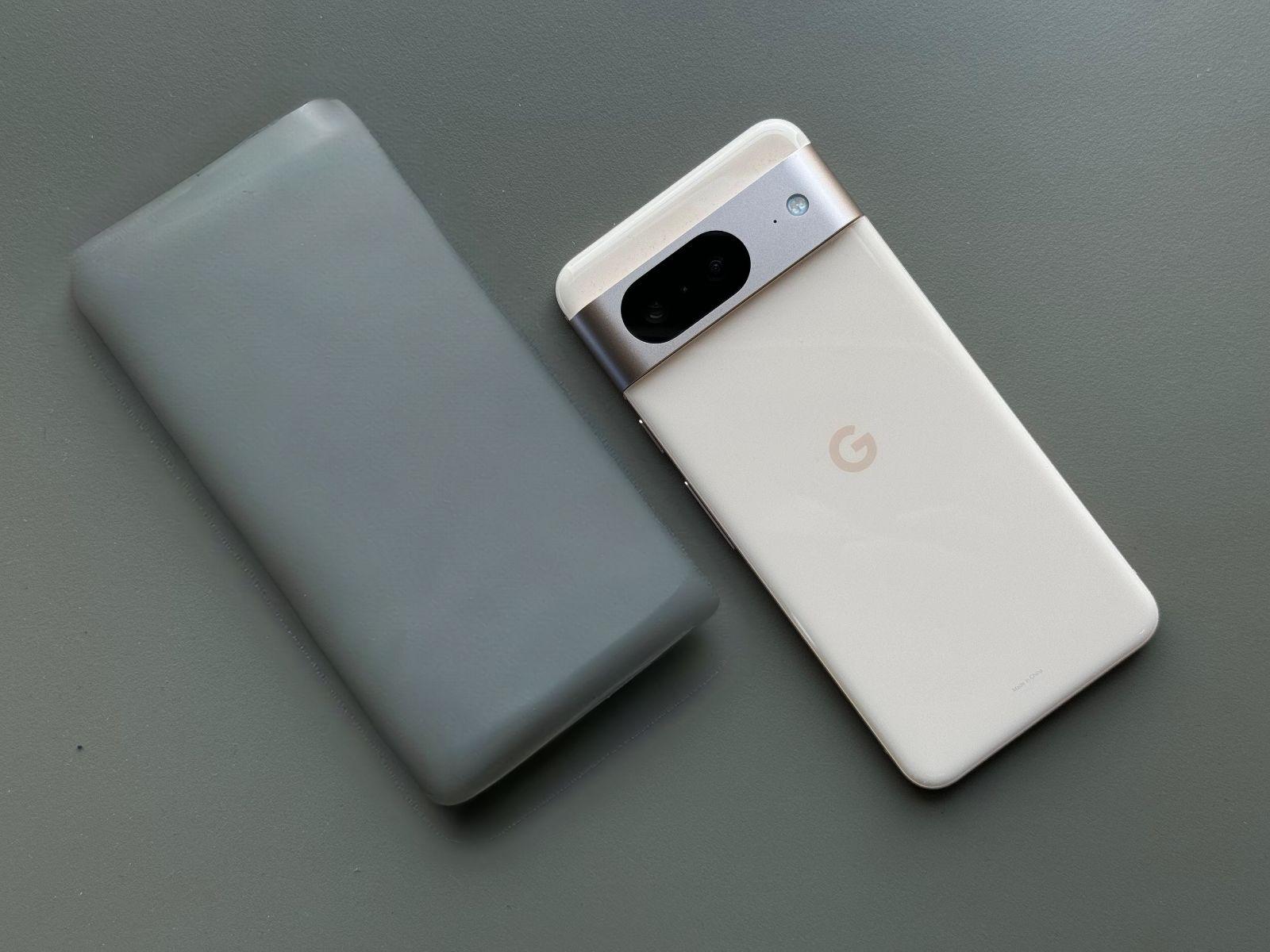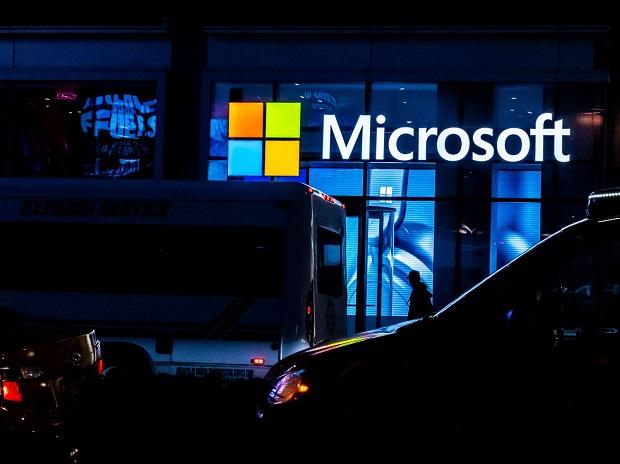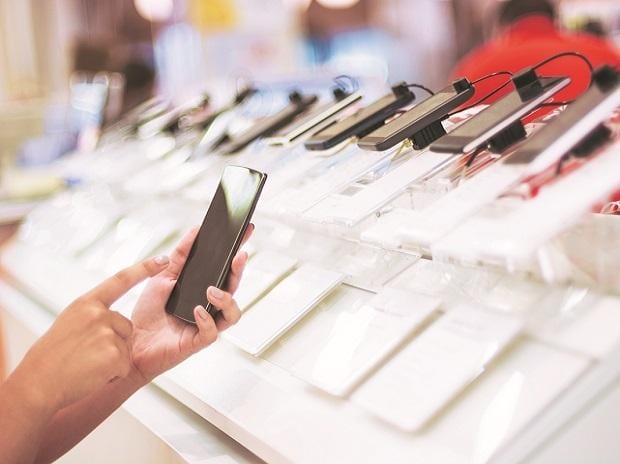With similar hardware and AI-based features, the Pixel 8 offers an experience comparable to its elder sibling in a more compact form. The question at hand is whether these features translate into practical utility and whether the phone justify the price tag of Rs 75,999. Let us find out:
Design
The design of the Pixel 8 follows a familiar pattern set by its predecessor. Its distinctive horizontal camera bar on the rear, though not universally appealing, offers unique advantages. It elevates the phone at an angle, protecting the camera glass from scratches when used without a protective case and providing additional support for the index finger during handling. The rose-coloured model (review unit) effectively conceals fingerprint marks despite its glossy glass on the rear. Moving to the front, the flat 6.2-inch display, with subtly curved edges, enhances the overall appearance of the device.
While the Pixel 8 may appear somewhat thick when viewed from the side, its curved edges and compact dimensions make it feel like the ideal smartphone for comfortable one-handed usage.
Display
The display supports HDR10+ high dynamic range. It excels at showcasing detail, rendering content with crispness and vibrancy from any viewing angle. With a peak brightness of 2000 nits, it is readable even in the brightest lighting conditions. In low-light environments, an “Extra Dim” mode is available, which further darkens the screen beyond the regular minimum brightness level. While it functions effectively, you may find that the standard minimum brightness level on the slider is dim enough for nighttime use. Additionally, the Pixel 8 has an “Always On” display feature that seamlessly transitions to the lock screen when you pick up the device, adding convenience to the user experience.
Camera
The Pixel 8 has a dual-camera setup on its rear, comprising a 50megapixel primary sensor and a 12MP ultra-wide-angle sensor. In default mode, the primary lens consistently delivers clear and crisp images, meeting the expectations of a flagship-grade smartphone. These photos maintain a natural appearance without appearing overexposed or heavily optimised. The ultrawide lens excels in capturing vibrant and accurate pictures but struggles in dimly lit environments. However, the 10.5MP front camera tends to disappoint in low-light scenarios, resulting in somewhat lackluster images.
The Pixel 8 lacks a dedicated telephoto camera, but it relies on the primary lens for 2x zoom at optical quality. It works fine in good light conditions, but not so in low light conditions. The Pixel 8 Pro supports up to 8x digital zoom. Surprisingly, Google’s software enhancements effectively sharpen digitally zoomed images, maintaining their sharpness and quality as long as the shots are clicked in good light conditions.
Google has added modes for use in specific scenarios. Action Pan, for example, to capture moving subjects. However, the experience is not polished from these modes. Taking Action Pan as an example again, the camera occasionally struggles to focus, particularly when the subject is not moving rapidly or when the background is crowded. The software optimization for panoramic shots offers a spatial mode viewing option that enhances the overall user experience.
AI-based photos and videos features
The Google Pixel 8 boots stock Android 14 loaded with slew of AI-powered features, including generative AI-based tools. These features are integrated into the operating system and sure to leave you in awe, particularly at first.
Upon selecting the ‘edit’ option in the Photos app, you are greeted with a multitude of AI-driven editing suggestions. In the ‘tools’ section, you will discover a range of new editing choices, including Magic Eraser, Best Take, Sky, and an experimental Magic Editor feature.
Magic Eraser enables you to select objects in the pictures and remove them with a tap. It does work, but mostly in pictures with less crowded scenes and without objects at varying depths. Best Take proves to be one of the most practical options, allowing you to swap faces in group photos from a stack of multiple pictures with surprisingly good results. Sky filter lets you alter the environmental backdrop of your image to options like Airy, Storm, or Ember. However, it appears to be somewhat hit or miss; it works well with wide field-of-view shots but may encounter challenges in other scenarios.
The Magic Editor is the sole feature that does not process the image directly on the device, requiring you to back up your picture to use this tool. Like Magic Eraser, it allows you to remove objects with a simple tap, but it also offers the ability to resize or reposition the object within the frame. Once you have finished editing, AI seamlessly fills in empty spaces with generated patterns, presenting you with multiple generated images to choose from and save.
For video editing, you will find the Magic Audio Eraser, a feature that can distinguish between different sound profiles within a video, enabling you to independently adjust the volume levels for each. It is worth noting, though, that this feature has limitations, as it does not work for videos longer than two minutes.
While these AI editing features are undoubtedly enjoyable to experiment with, many of them may not feel particularly practical for everyday use. These functionalities are more likely to be occasional indulgences rather than frequent tools for the majority of users who invest in this smartphone.
Software
Google has enriched its Assistant with AI features, enabling it to read aloud articles, posts, texts, and even offer concise summaries of the same. The read-aloud function consistently performs well, and the Google Assistant even demonstrates the ability to read text from images. However, the summarization feature does not exhibit the same level of effectiveness.
The inclusion of the live caption feature is another noteworthy addition, providing real-time captions for offline videos. Presently, it supports English, French, German, Italian, Japanese, and Spanish languages. The Pixel 8 also gets real-time text translation capability, which extends to third-party messaging applications like WhatsApp as well. Its performance is somewhat unpredictable as it occasionally misjudges the language.
The updated “Now Playing” feature goes beyond merely recognizing songs in the vicinity of the device. It also allows you to add the identified song to your Spotify or Apple Music playlist with a simple tap.
Performance
The Pixel 8 is powered by the Tensor G3 chip, which offers respectable performance for everyday tasks. However, it is plagued by a significant heating issue, even during light activities such as voice calls. This thermal problem can make the phone uncomfortably hot to hold, necessitating a pause until it cools down. This heating issue impacts gaming performance as well, with noticeable lag emerging after prolonged use due to the Immortalis G-715s GPU throttling to prevent overheating.
Additionally, the Pixel 8 struggles to deliver satisfactory battery life, with the phone depleting roughly 23 per cent of the battery charge in just two hours of general usage. Charging speed also falls short of expectations, as it takes over an hour to achieve a full charge.
Verdict
The Pixel 8 undeniably stands out when it comes to software capabilities, and the phone’s AI features take the experience to a whole new level. This compact flagship smartphone brings something truly distinctive to the table, offering features that no other smartphone currently offers. However, it does come with certain trade-offs, particularly in terms of thermal efficiency and battery life. If you are in search of a one-of-a-kind experience in a compact form factor, the Pixel 8 might be the right choice for you, provided you can accept and work around its shortcomings in the hardware department.
Note:- (Not all news on the site expresses the point of view of the site, but we transmit this news automatically and translate it through programmatic technology on the site and not from a human editor. The content is auto-generated from a syndicated feed.))



